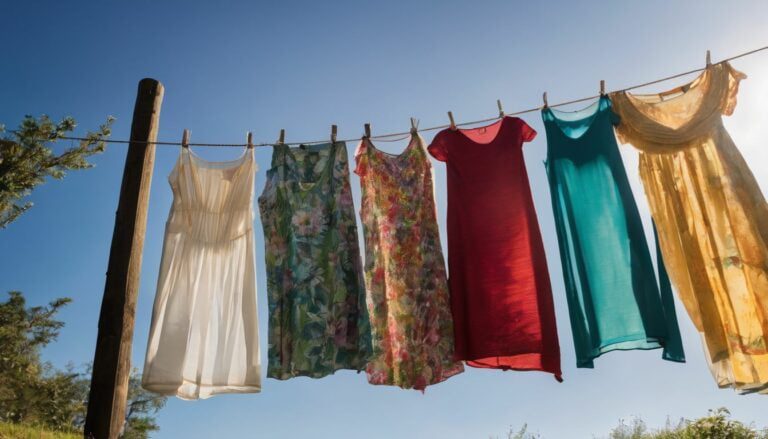What is Compostable and How Does it Benefit the Environment?
Do you ever find yourself worrying about the amount of waste you generate and its impact on the planet? The truth is, a significant portion of our everyday trash can be composted, an action which reduces garbage in landfills and slashes greenhouse gas emissions.
In this article, we delve into what exactly ‘compostable’ means and how turning your kitchen scraps and yard waste into compost can have a profound effect on the environment. Don’t toss that apple core just yet – let’s get started!
Key Takeaways
- Compostable materials are organic waste that can break down into nutrient-rich compost through natural decomposition.
- Composting reduces garbage in landfills, cuts greenhouse gas emissions, and helps improve soil health.
- Kitchen scraps like fruit and vegetable scraps, coffee grounds, tea leaves, eggshells, bread, and paper towels can be composted.
- In the garden, green waste (grass clippings and fruit/vegetable scraps), brown waste (paper/cardboard), prunings, and coffee grounds make great compostable materials.
- Bathroom items like compostable toilet paper, tissues, cotton balls, and wooden toothbrushes can also be added to your compost pile.
- Office waste such as paper documents and cardboard boxes along with food scraps can be composted to reduce landfill waste.
- Pet and animal waste like pet food leftovers or manure from animals like horses or chickens can be composted.
- Compostable holiday items made from leaves or plant fibers help reduce waste during festive seasons.
- Other materials such as paper towels/napkins, wooden utensils/toothpicks/chopsticks/corks/swabs/stems/bamboo products/fiber clothing/dry leaves/grass clippings/nut shells/coffee/tea bags are also compostable when mixed with kitchen waste.
Understanding Composting

Composting is a cool way to turn waste into rich soil. It takes organic waste and helps it break down. This happens when you mix things like food scraps with lawn trimmings in a compost pile or bin.
Nature does the rest! Bacteria, fungi, and other tiny creatures munch on this mix of green and brown materials. They help it change into something called humus.
Humus makes garden soil super healthy for plants. It holds water but also lets air move around plant roots. Too much rain? No problem – good compost stops the soil from getting too wet and soggy! Don’t have enough rain? Compost will help by keeping more water in the soil for your plants to drink up later.
What is Compostable Material?
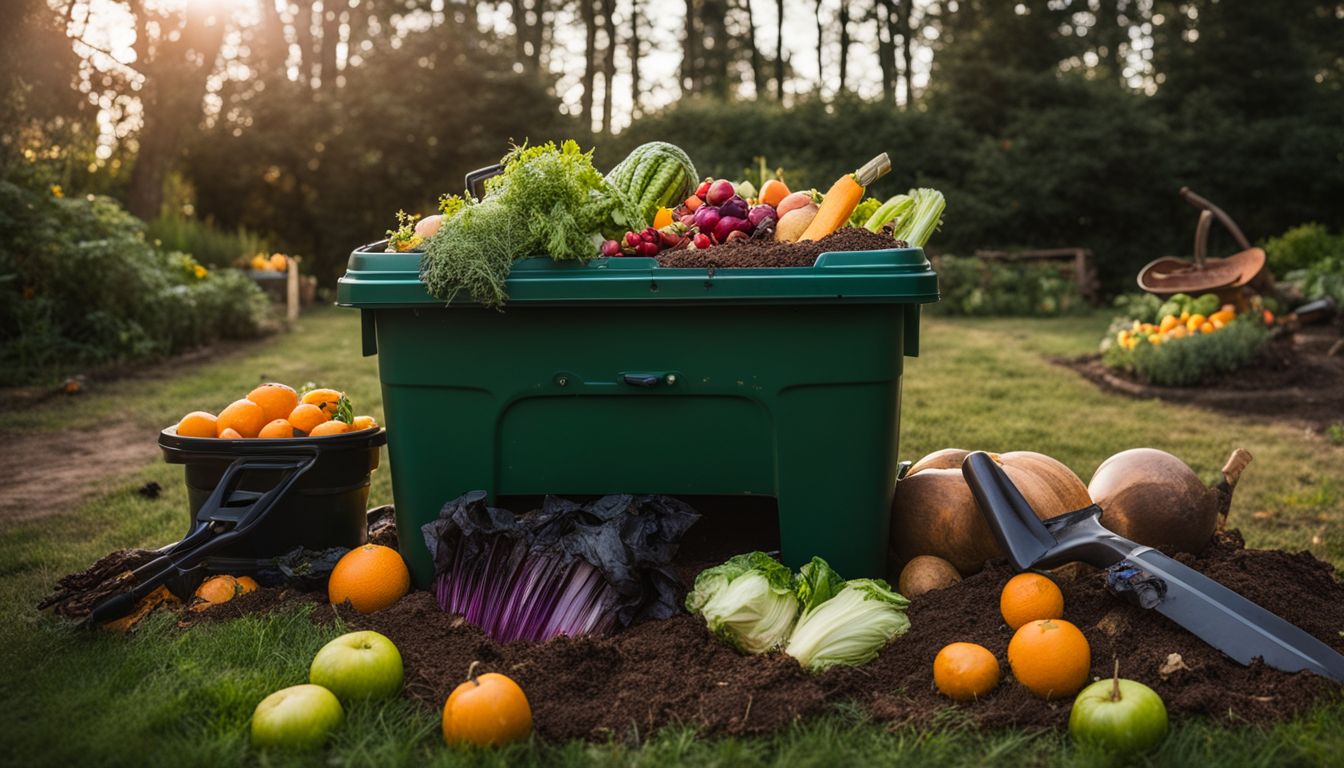
Compostable material refers to organic waste that can break down into nutrient-rich compost through the natural process of decomposition.
Compostable in the Kitchen

The kitchen is full of items you can compost.
- Fruit and vegetable scraps: These are green materials. They break down fast.
- Coffee grounds: Rich in nitrogen, these help the compost heat up.
- Tea leaves: Another green material, they give your compost a kick-start.
- Egg shells: Crushed up, they add calcium to the soil.
- Bread: Slice it into small pieces before you compost it.
- Paper towels and napkins: As long as they haven’t touched meat or dairy, these brown materials are great for balance.
Compostable in the Garden
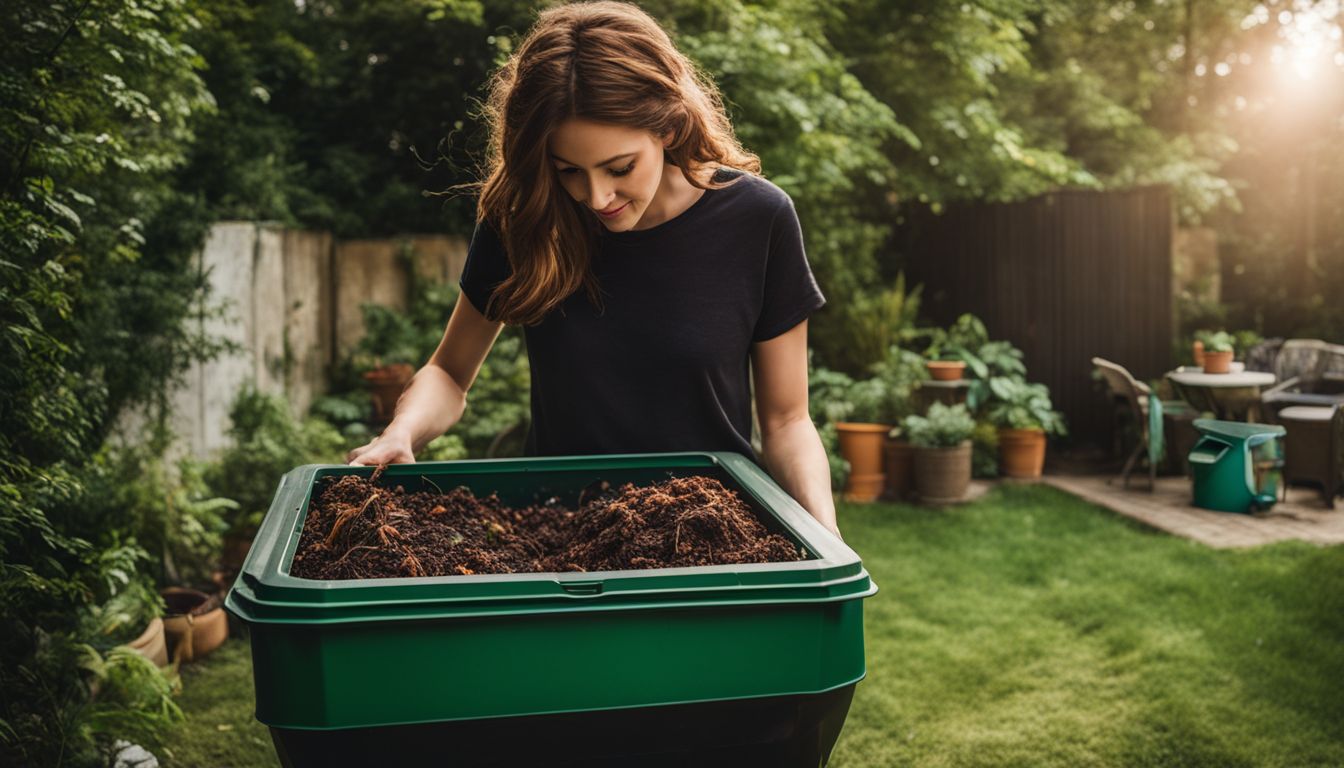
Composting in the garden can be a great way to reduce waste and help plants grow. There are many things you can compost from your garden:
- Green waste: These materials bring nitrogen to your compost pile. Some examples are grass clippings and fruit and vegetable scraps.
- Brown waste: This kind of waste adds carbon to the mix. Paper, cardboard, and dead plants are good brown materials.
- Prunings: Trimmed branches and leaves from trees or bushes can go into the compost bin.
- Coffee grounds: They are rich in nitrogen, so they make a great green material.
Compostable in the Bathroom

In the bathroom, there are several compostable materials that can be used to reduce waste and benefit the environment. These materials are made from carbon-based biomaterials and do not contain toxic residues or harsh chemicals. Composting these bathroom materials helps reduce waste sent to landfills and minimizes the need for synthetic products. Here are some examples of compostable items in the bathroom:
- Toilet paper: Compostable toilet paper is made from recycled paper or bamboo fibers, which break down easily.
- Tissues: Instead of throwing tissues in the trash, opt for compostable tissues made from recycled or sustainably sourced materials.
- Cotton balls: Compostable cotton balls are made from organic cotton and can be easily broken down in a compost pile.
- Wooden toothbrushes: Traditional plastic toothbrushes take hundreds of years to decompose. Switching to a compostable wooden toothbrush reduces plastic waste.
Compostable Office Waste

Composting office waste is an effective way to reduce the amount of trash that goes to landfills and help the environment. Here are some compostable items you can find in your office:
- Paper: Office paper, printer paper, and shredded documents can all be composted.
- Cardboard: Boxes, packaging materials, and cardboard tubes can also be added to your compost pile.
- Food scraps: If your office has a kitchen or break room, leftover fruits, vegetables, coffee grounds, tea bags, and eggshells can all be composted.
- Plant-based utensils: Compostable forks, spoons, and plates made from materials like cornstarch or bamboo are great alternatives to plastic utensils and can go into the compost bin too.
Compostable Pet and Animal Waste
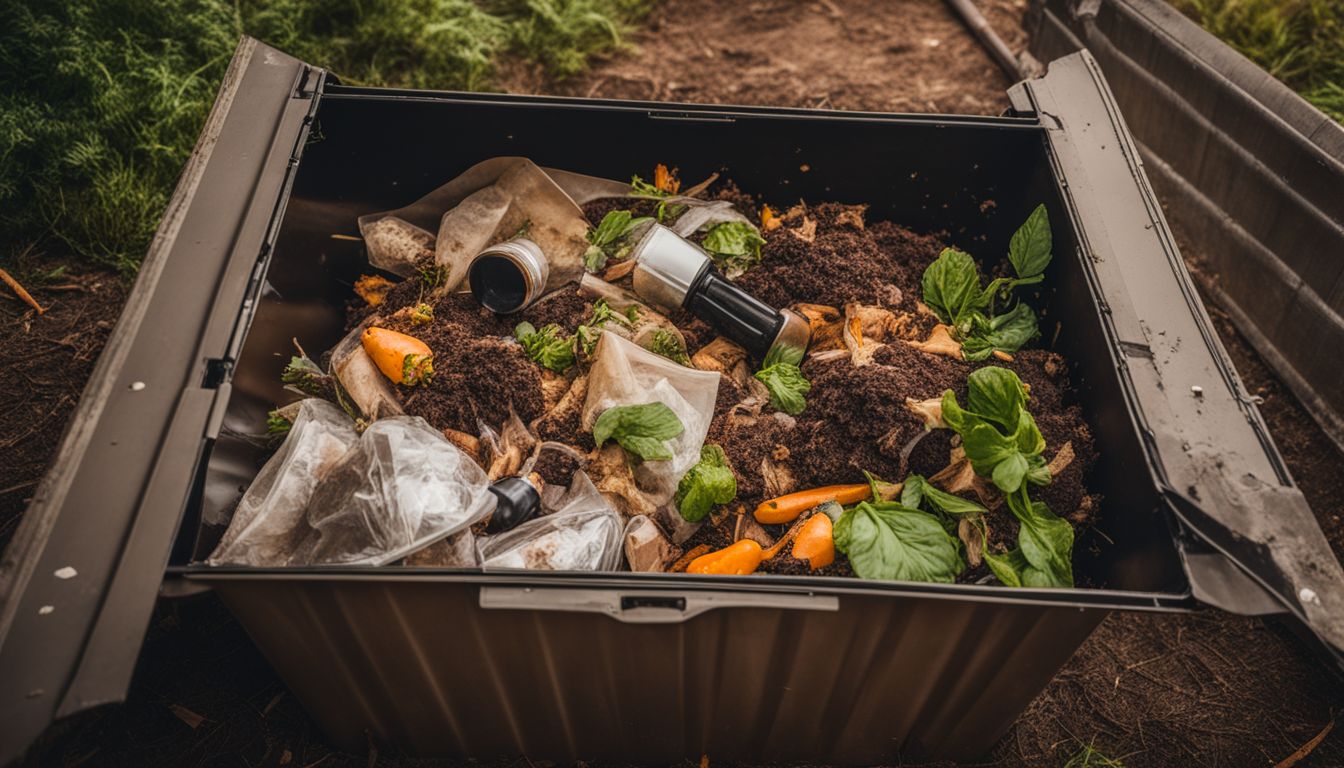
Composting pet and animal waste is a great way to reduce your environmental impact. Here are some items you can compost from your furry friends:
- Pet food: Uneaten dry kibble or wet food can be composted.
- Animal bedding: Used straw, hay, wood shavings, or newspaper bedding can all go in the compost bin.
- Fur and feathers: Shed fur from dogs, cats, rabbits, and feathers from chickens or birds can be composted as well.
- Manure: Horse, cow, chicken, or rabbit manure is rich in nutrients and makes excellent compost.
- Litter: If you use natural materials like sawdust or wood shavings for cat litter, it can be composted.
Compostable Holiday Items
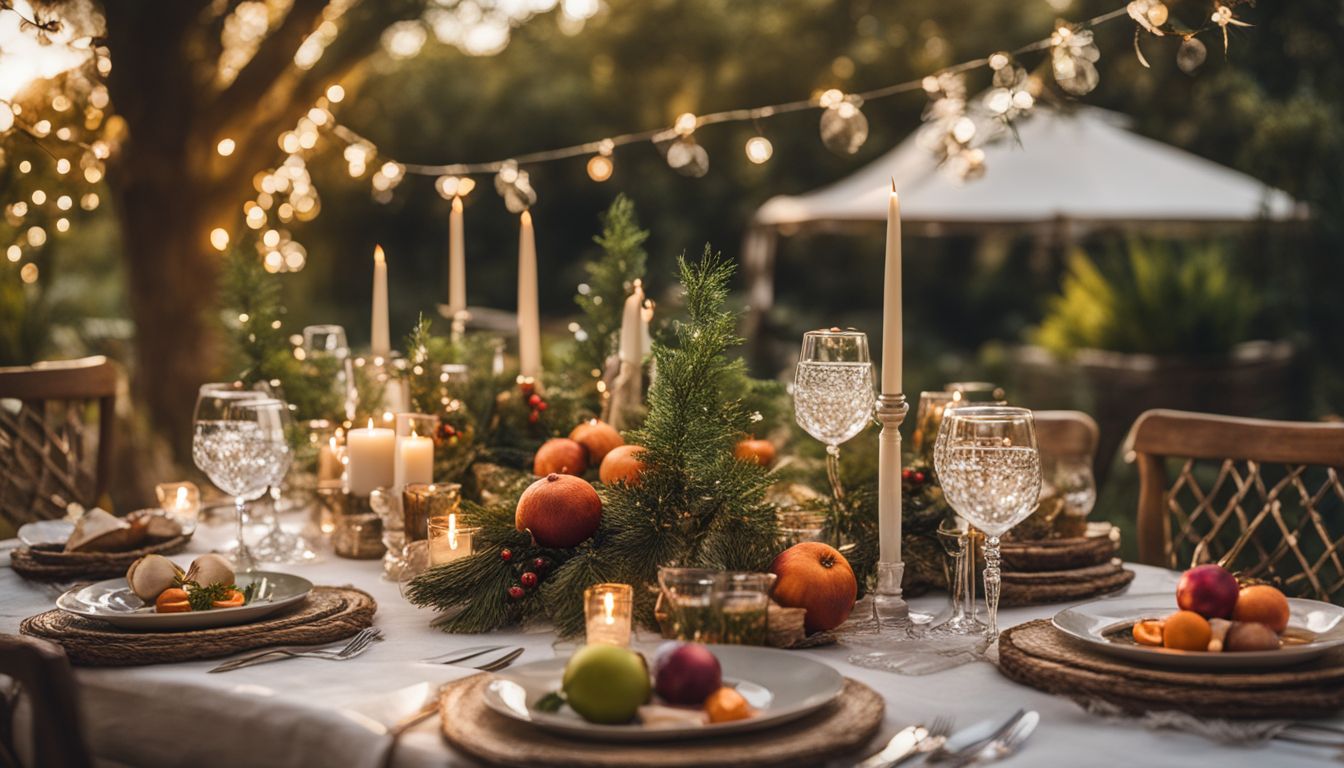
Compostable holiday items are made from natural materials like leaves, wood, and plant fibers. These items break down completely by microorganisms within a short span of time. They do not leave behind any toxic residues or harsh chemicals that can pollute the environment. Compostable holiday items fully degrade within a defined period of time, reducing waste and promoting sustainability during the festive season.
Other Compostable Materials
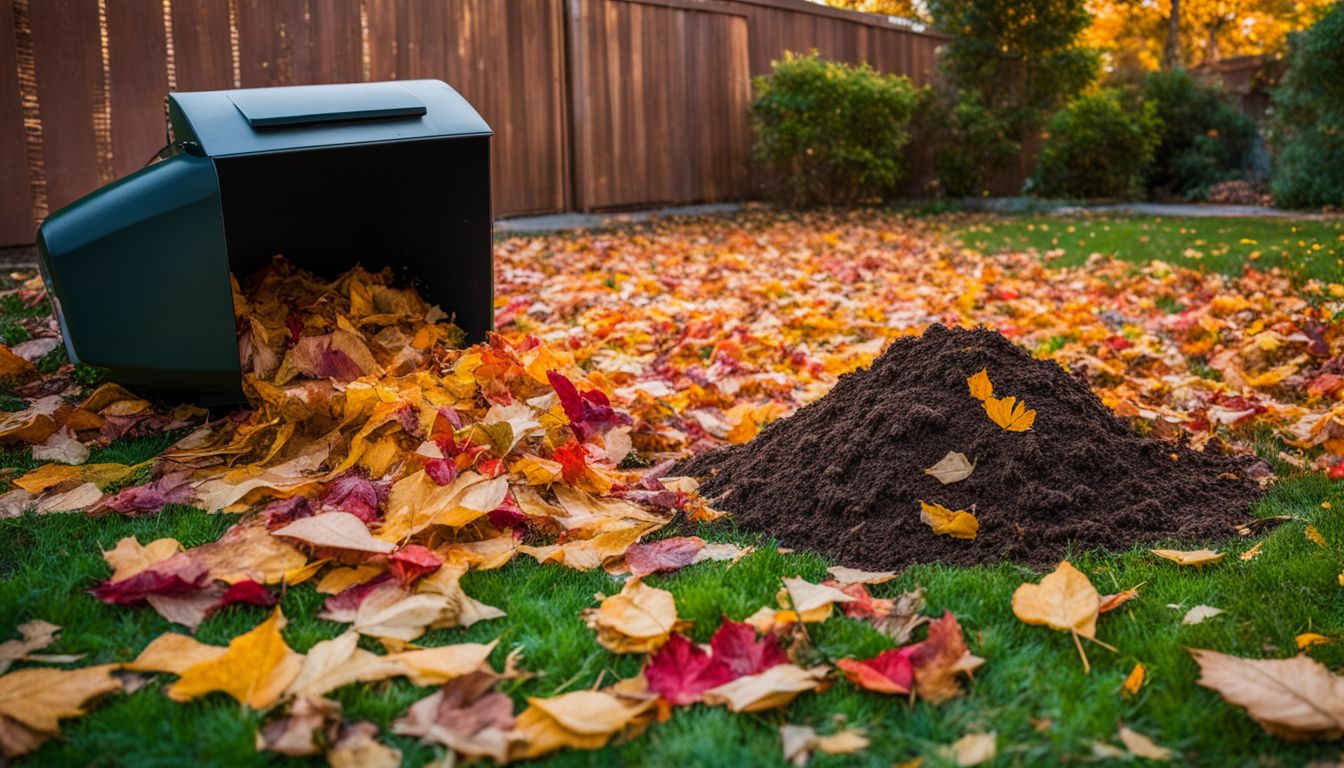
Other materials that can be composted include:
- Paper towels and napkins
- Cardboard food containers (such as pizza boxes)
- Wooden toothpicks and chopsticks
- Natural corks from wine bottles
- Cotton balls and swabs made with paper stems
- Bamboo and wooden utensils
- Natural fiber clothing and textiles (such as cotton or linen)
- Dry leaves, grass clippings, and yard waste
- Coffee grounds and tea bags (without the staples)
- Nut shells (such as walnut or pecan shells)
The Difference Between Compostable and Biodegradable

Compostable and biodegradable are two terms often used interchangeably, but they have distinct differences. Compostable materials can break down completely without leaving any toxic residue.
They turn into nutrient-rich compost that can be used to nourish plants and soil. On the other hand, biodegradable materials break down naturally over time, but they may leave behind some harmful substances as they decompose.
So, while both compostable and biodegradable items break down, only compostable items contribute to creating beneficial compost for the environment.
Top Compostable Items You Should Be Using
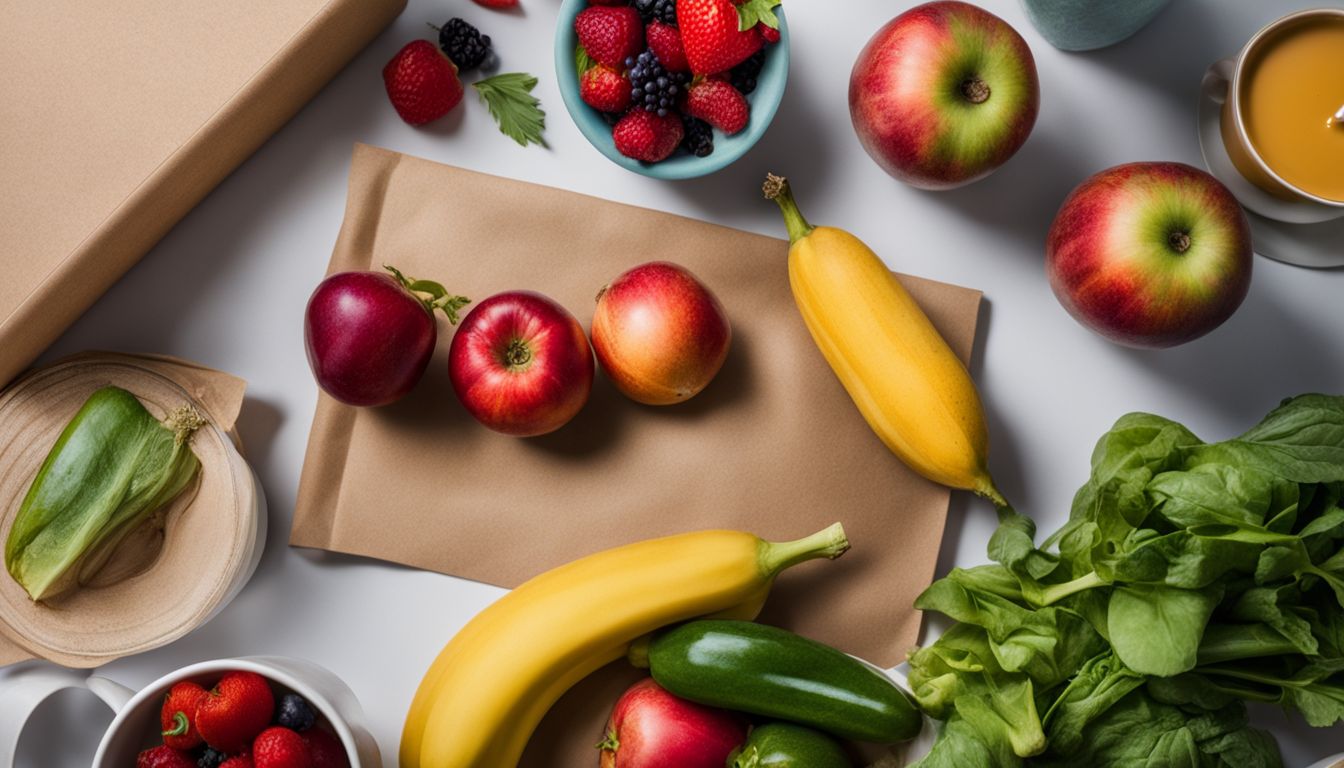
Compostable items you should be using include compostable bags, coffee cups, pods and filters, packaging and mailers, cups, plates and bowls, diapers, sponges, and pet supplies.
Compostable Bags

Compostable bags are an important item when it comes to composting. These bags are designed to break down completely into natural elements, like water and carbon dioxide, without leaving behind any toxic residue.
Compostable bags can be used for home composting or taken to commercial facilities that accept them. Industrial compost facilities have the capability to properly compost these bags, turning them into nutrient-rich soil amendment.
After they break down, the resulting material can be used as mulch, added to soil, or distributed on lawns and garden beds. So if you’re looking for an eco-friendly option for your trash or yard waste, consider using compostable bags!
Compostable Coffee Cups, Pods, and Filters

When composted properly, coffee cups, pods, and filters can turn into beneficial humus for your garden or plants. By choosing compostable options for your daily caffeine fix, you’re taking a small but impactful step towards a more sustainable and environmentally friendly lifestyle.
Compostable Packaging and Mailers

Compostable packaging and mailers are a sustainable alternative to traditional plastic packaging. They are designed to break down into natural elements without leaving any toxic residue behind.
By using compostable packaging and mailers, we can reduce plastic pollution and promote healthier environmental practices. However, it’s important to note that not all types of cardboard are compostable due to certain inks and coatings.
So, when choosing compostable packaging and mailers, make sure they meet the necessary standards. Together, by opting for compostable materials in our everyday lives, we can contribute to a greener future.
Compostable Cups, Plates, and Bowls
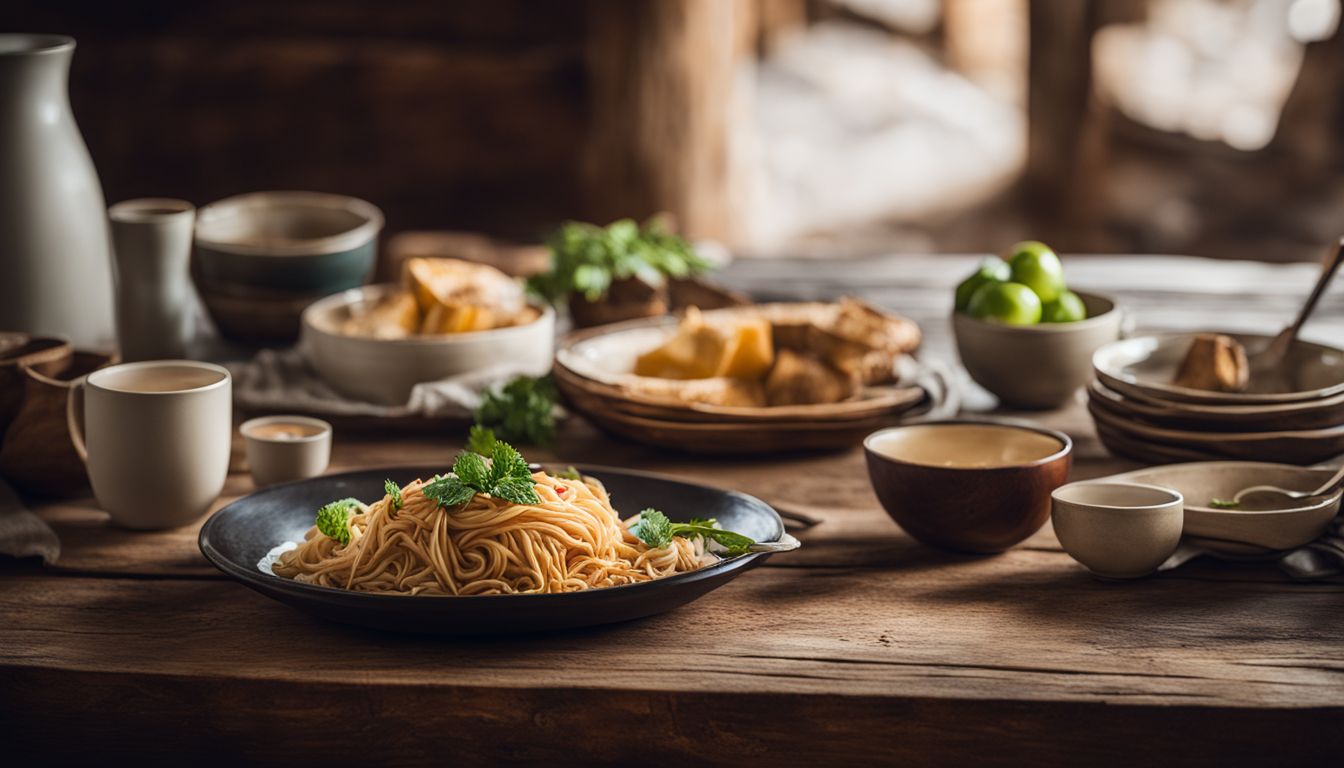
When you’re done with your meal, instead of throwing these items in the trash where they would end up in a landfill, you can toss them into your compost bin. They will decompose along with other organic waste and eventually turn into nutrient-rich soil that can be used for gardening.
This helps reduce waste and keeps valuable resources out of landfills. Plus, since compostable cups, plates, and bowls are made from natural materials, they don’t release harmful chemicals or microplastics when they break down.
Compostable Diapers

Compostable diapers are becoming increasingly popular as an eco-friendly alternative to traditional disposable diapers. These diapers are made from materials that can break down naturally without leaving behind any toxic residue.
Unlike regular diapers, which can take hundreds of years to decompose in landfills, compostable diapers can be disposed of in commercial or home compost heaps. This means that instead of contributing to waste and pollution, these diapers actually help create nutrient-rich soil for plants and gardens.
So if you’re looking for a more sustainable option for your baby’s diapering needs, consider giving compostable diapers a try!
Compostable Sponges
Compostable sponges are a great alternative to traditional sponges that contribute to plastic waste. These sponges are made from organic materials like plant fibers, leaves, and wood, which means they can easily break down into compost.
They don’t contain any toxic residues or harsh chemicals. By using compostable sponges, you can help reduce single-use plastic waste and make a positive impact on the environment.
Compostable Pet Supplies
Compostable pet supplies, like poop bags and cat litter, are made from natural materials such as leaves, wood, and plant fibers. They do not contain any toxic chemicals or residues that can harm the environment.
These supplies are considered eco-friendly alternatives to single-use plastic waste because they can break down completely within a short amount of time through the action of microorganisms.
By using compostable pet supplies, you can help reduce the amount of plastic waste that ends up in landfills or pollutes our oceans.
The Benefits of Composting

Composting provides numerous benefits for the environment, including reducing greenhouse gas emissions, improving soil health and fertility, and diverting organic waste from landfills.
Environmental Benefits
Composting offers many environmental benefits. One of the biggest advantages is reducing greenhouse gas emissions. When organic waste goes to landfills, it breaks down in an anaerobic environment and produces methane, a potent greenhouse gas that contributes to climate change.
Composting, on the other hand, allows organic materials to decompose aerobically, which significantly reduces methane emissions. Additionally, composting helps protect water quality by preventing nutrient runoff and promoting healthy soil that can absorb and filter rainwater more effectively.
It also reduces the need for synthetic fertilizers and pesticides, minimizing their negative impacts on ecosystems and human health. By diverting food scraps from landfills through composting, we can make a positive impact on our environment and work towards a more sustainable future.
Benefits for Plants and Soil
Composting has numerous benefits for both plants and soil. When we compost organic waste, it breaks down into nutrient-rich humus. This humus improves the fertility of the soil, making it a perfect home for plants to grow.
Additionally, finished compost helps the soil retain moisture and heal depleted areas. It also promotes healthy plant growth by increasing soil microbial activity, which supports beneficial bacteria and fungi that help plants absorb nutrients more efficiently.
Compost is like a buffet for earthworms, insects, and microorganisms, creating a biodiverse habitat that further enhances soil health. By using compost in gardening or farming practices, we can prevent erosion and promote sustainable plant growth while reducing our reliance on synthetic fertilizers.
How to Start Composting at Home

To start composting at home, gather organic waste such as fruit and vegetable scraps, coffee grounds, and yard trimmings. Place these materials in a compost bin or pile in your backyard.
Layer the waste with brown materials like dry leaves or shredded newspaper to create a balance of carbon and nitrogen-rich materials. Keep the compost moist but not soggy, and turn it regularly to promote decomposition.
Consider worm composting (vermicomposting) if you have limited space or want to speed up the process.
Ingredients for Composting
Composting requires a mix of specific ingredients to create the perfect environment for decomposition. You’ll need both green (nitrogen-rich) and brown (carbon-rich) materials. Green materials include things like grass clippings, fruit and vegetable scraps, and coffee grounds.
Brown materials consist of paper, cardboard, prunings, and dead plants. It’s important to have a good balance between these two types of ingredients to ensure proper breakdown and nutrient-rich compost.
Industrial compost facilities can handle a wider range of materials, such as dairy and meat products. By using the right ingredients in your compost pile or bin, you can create nutrient-dense soil that benefits your garden while reducing waste in landfills.
Steps for Backyard Composting
To start composting in your backyard, follow these simple steps:
- Choose a location for your compost pile or bin. Find a spot that is convenient to access and has good drainage.
- Gather the necessary materials. You will need a mix of green and brown materials. Green materials include fruit and vegetable scraps, coffee grounds, and grass clippings. Brown materials include dry leaves, straw, and shredded paper.
- Layer the materials in your compost pile or bin. Start with a layer of brown materials, then add a layer of green materials. Continue alternating layers until you have used up all your organic waste.
- Water your compost pile to keep it moist, but not soaking wet. Aim for the moisture level of a damp sponge.
- Turn or mix the compost regularly to provide oxygen for decomposition. This can be done with a pitchfork or by using a tumbler bin that you can rotate.
- Monitor the temperature of your compost pile. The ideal temperature range for decomposition is between 120-160°F (49-71°C). If it gets too hot, turn the pile to cool it down; if it’s too cold, add more green materials.
- Wait patiently for the magic to happen! Depending on the size of your pile and the conditions, it may take anywhere from several months to over a year for your compost to fully decompose.
Worm Composting (Vermicomposting)
Worm composting, also known as vermicomposting, is an effective way to reduce waste and create nutrient-rich soil. It helps divert organic waste from landfills and promotes healthy plant growth. To start worm composting, you will need red worms or red wigglers, which are commonly used for this method. Here are some important facts about worm composting:
- Vermicomposting improves soil quality.
- It retains moisture in the soil.
- Vermicomposting helps reduce the amount of waste going to landfills.
- This method is accessible and rewarding for reducing waste.
- Worm composting creates nutrient – rich soil that can be used in gardens and potted plants.
- Red worms feed on organic materials like fruit and vegetable scraps, coffee grounds, and shredded paper.
- The decomposition process carried out by worms produces a substance called vermicompost, also known as “black gold.”
- Vermicompost is rich in essential nutrients like phosphorus, potassium, calcium, magnesium, iron, and zinc.
- Worm composting can be done indoors or outdoors depending on available space and climate conditions.
Conclusion
Compostable materials are those that can break down naturally without leaving harmful residue. Composting these materials can reduce greenhouse gas emissions and contribute to a healthier environment.
By composting at home or using commercial facilities, we can help improve soil health, prevent erosion, and conserve water. Let’s embrace composting as a sustainable practice to benefit the environment for generations to come.

FAQs
1. What does it mean for something to be compostable?
When something is compostable, it means that it can break down naturally into nutrient-rich soil through a process called composting.
2. How does composting benefit the environment?
Composting benefits the environment by reducing waste sent to landfills, improving soil quality, and preventing the release of harmful greenhouse gases.
3. What can I compost at home?
You can compost kitchen scraps like fruit and vegetable peels, coffee grounds, eggshells, and yard waste such as leaves and grass clippings. Avoid adding meat, dairy products, or oily foods to your home compost bin.
4. Can I use compost in my garden or plants?
Yes! Compost is a natural fertilizer that enriches soil with nutrients. It can improve plant growth and health when used in gardens or added to potted plants.


